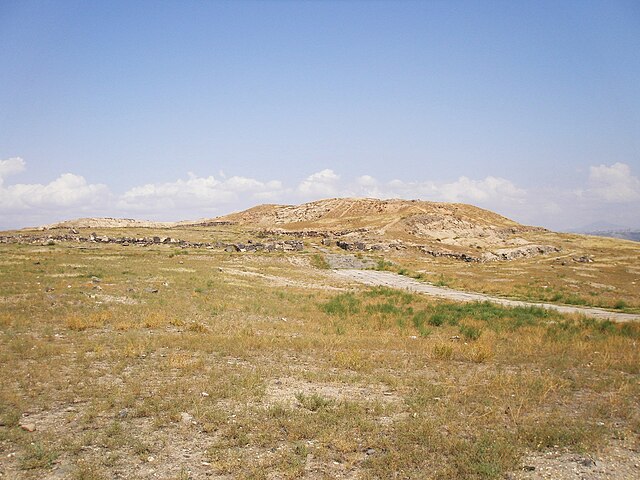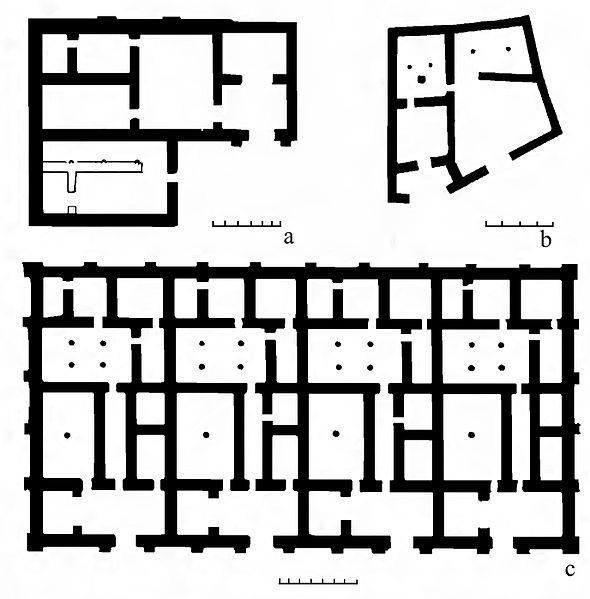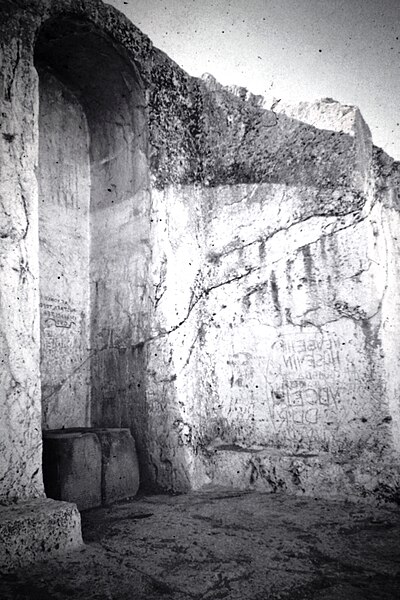Teishebaini was the capital of the Transcaucasian provinces of the ancient kingdom of Urartu. It is located near the modern city of Yerevan in Armenia. The site was once a fortress and governmental centre with towered and buttressed perimeter walls, massive gates, a parade ground within its walls, and storage rooms that entirely occupied the ground floor. The site of the city, palace and citadel together measure over 0.45 km2. The name Karmir Blur translates to "Red Hill" because of the hill's reddish hue. It became this color after the city was set on fire and the upper walls which were made of tuff fell and crumbled because of the heat. After the tuff was heated by the fire, it took on a more intense red color and therefore the hill became red. The lower portions of the walls were left standing after the fire since they were built with a stronger stone. Teishebaini is situated at a height of 901 metres (2,956 ft).
Karmir Blur "Red Hill"
Plans of residential houses in Teishebani. a, b - monats, c - multisection
Foundations of ancient towns near Teishebaini (Karmir Blur in the distance)
The ancient walls of Teishebaini at Karmir Blur (stone at the bottom, mud-brick at the top)
Urartu was an Iron Age kingdom centered around Lake Van in the Armenian Highlands. It extended from the eastern bank of the upper Euphrates River to the western shores of Lake Urmia and from the mountains of northern Iraq to the Lesser Caucasus Mountains. Its kings left behind cuneiform inscriptions in the Urartian language, a member of the Hurro-Urartian language family. Since its re-discovery in the 19th century, Urartu, which is commonly believed to have been at least partially Armenian-speaking, has played a significant role in Armenian nationalism.
Fragment of a bronze helmet from Argishti I's era. The "tree of life", popular among the ancient societies, is depicted. The helmet was discovered during the excavations of the fortress Of Teyshebaini on Karmir-Blur (Red Hill).
Niche and base for a destroyed Urartian stele, Van citadel, 1973.
Urartian stone arch near Van, 1973. [citation needed]
Urartian tomb complex, Van citadel, 1973.







![Urartian stone arch near Van, 1973. [citation needed]](https://upload.wikimedia.org/wikipedia/commons/thumb/a/a7/Urartian_arch_near_Van._1973.jpg/640px-Urartian_arch_near_Van._1973.jpg)
